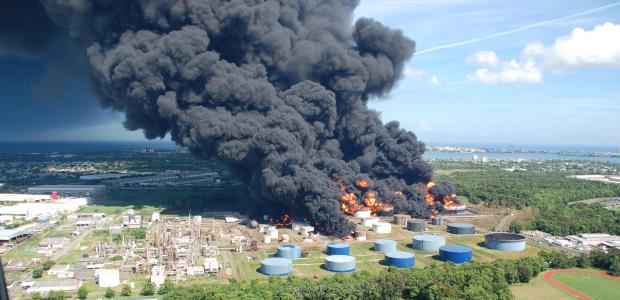They will help nighttime drivers spot hard-to-see people and larger animals ahead of their vehicles and also hazards that are not in the direction of travel.
The tests feed volcanic ash into jet engines to test advanced sensors and diagnostics.

Speakers include keynoter Jim Davidson, a veteran of many high-altitude climbs and rescues, and Closing General Session speaker Daryl "Moose" Johnston, a three-time Super Bowl winner with the Dallas Cowboys and "NFL on Fox" analyst.
The compendium will be updated regularly and expanded as federal agencies add products, capabilities, and services to help communities prepare for, respond to, and recover from the health impacts of disasters.

Also on the agenda are a staff presentation on the calendared recommendation to BP resulting from CSB's investigation of the 2005 BP America refinery explosion in Texas City, Texas, and staff reports on recommendations related to California's draft Process Safety Management rules and laboratory safety guidelines from the American Chemical Society.
Details of the study were released July 14 by the California Office of Traffic Safety and the California Highway Patrol.
OSHA has cited Shady Knob Pallet Co. for 17 serious safety violations.
Oak Harbor Freight Lines has been ordered to comply with federal safety rules.
At 1,978,680 pounds, the Aspen Foods recall is even larger than Barber Foods' recall announced a few days earlier.
The agency's proposed revisions are the first major rewrite since 1991.
OSHA says that Lauren Manufacturing ignored machine safety hazards.
Labor agencies in the states of Alabama, California, Colorado, Connecticut, Florida, Hawaii, Illinois, Iowa, Louisiana, Maryland, Massachusetts, Minnesota, Missouri, Montana, New Hampshire, New York, Rhode Island, Texas, Utah, Washington, Wisconsin, and Wyoming agencies have signed similar agreements.

DATIA and some testing companies also submitted comments in response to SAMHSA's proposed mandatory guidelines, which were published May 15, 2015.
The agency has called for more testing to identify causes.
Overall, food industry workers had 60 percent higher rate of occupational illness and injury than workers in non-food industries and a lost-time injury rate more than twice as high.